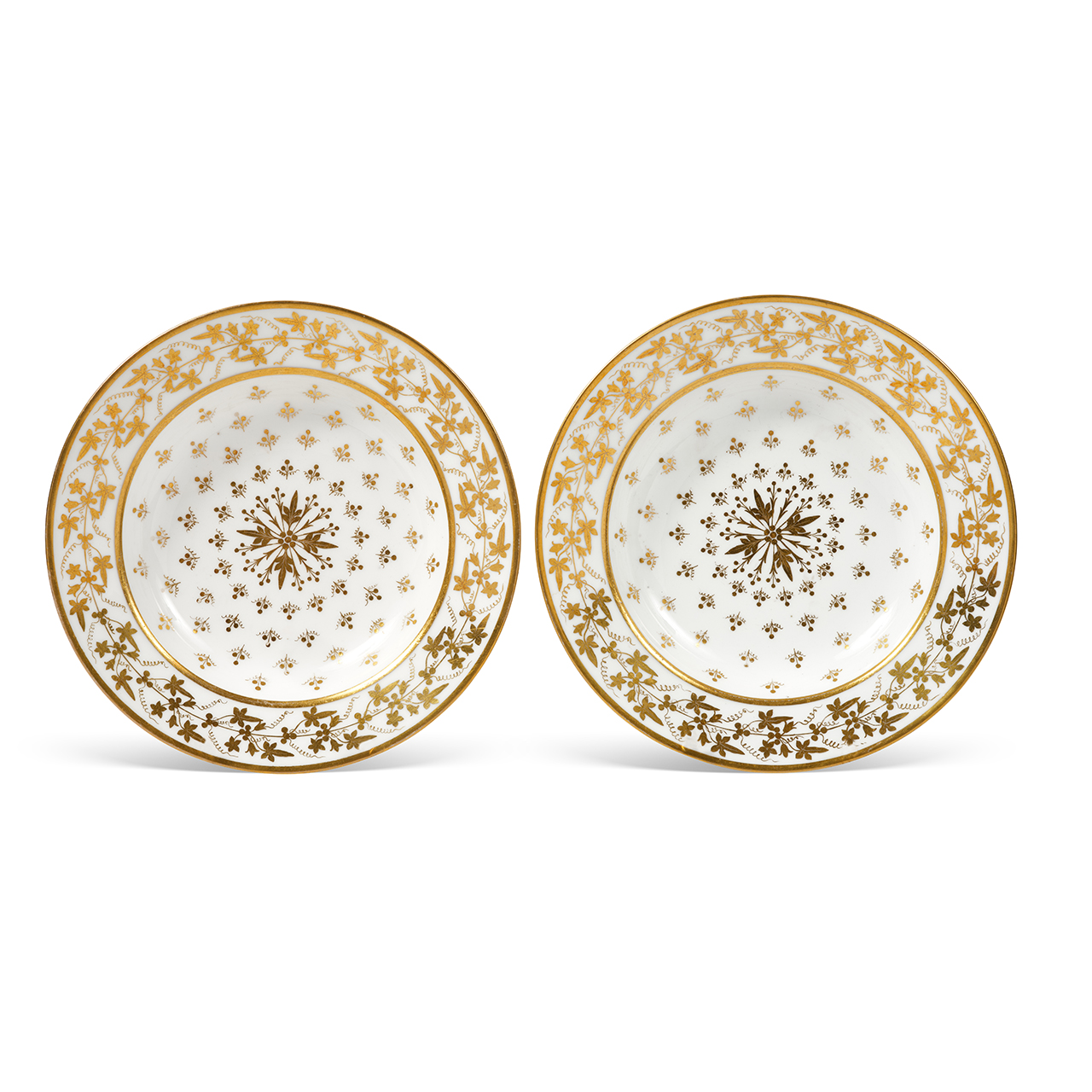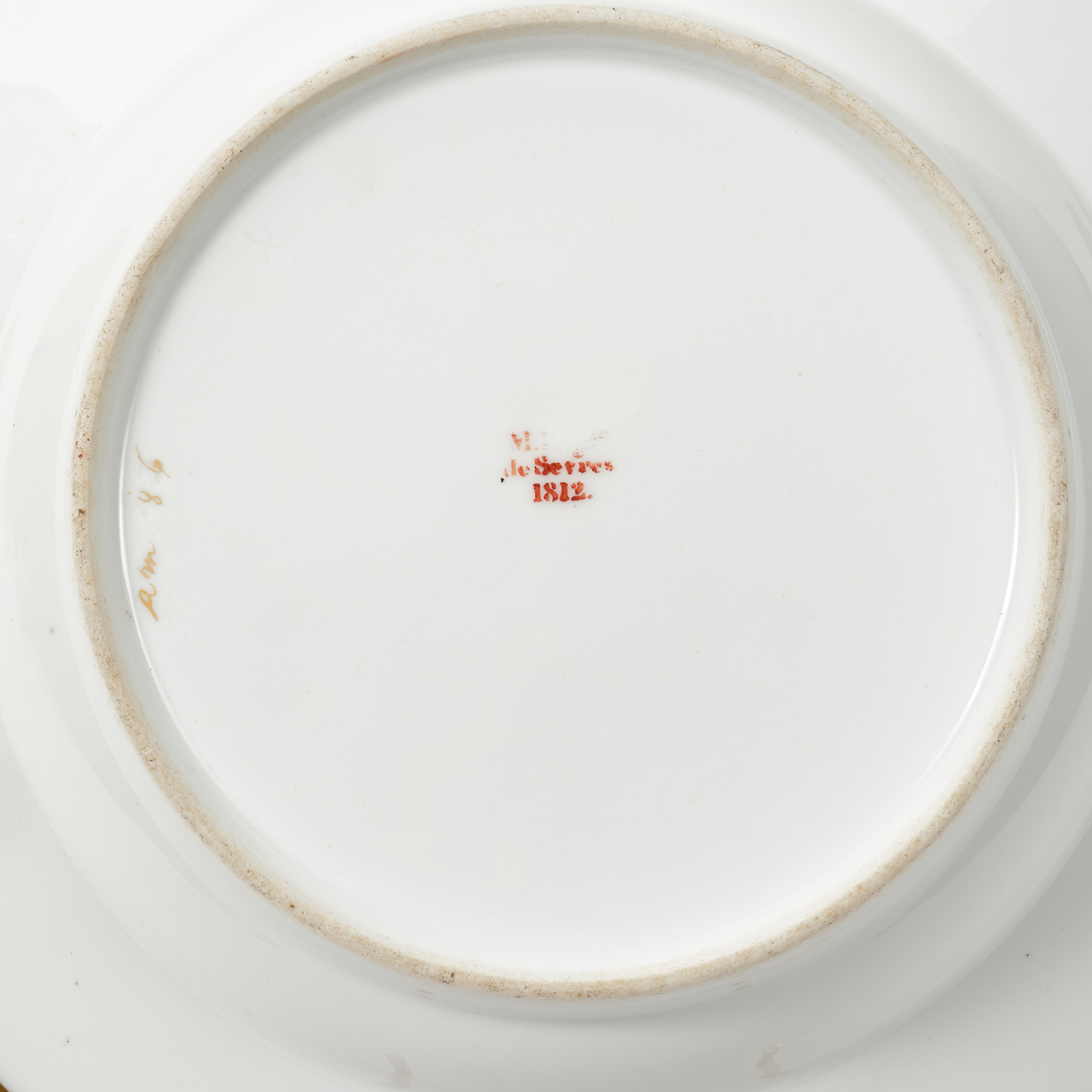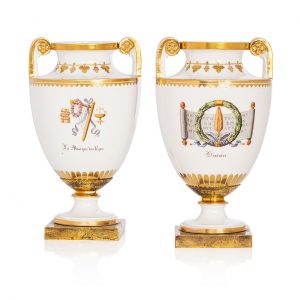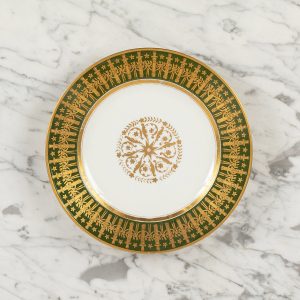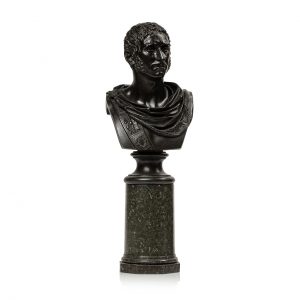Decorated with a frieze of gold leaves on the marli called "frise d'or brionne", the basin decorated with a seedling of gold flowers, in the center a leafy rosette.
Good condition.
Sèvres imperial factory, 1812.
Red stamp marks and gilders marks.
D. 24 cm.
- Entered the Sèvres sales store on April 22, 1812 (Arch. MNC, Sèvres, Vu1, fol. 129), the service described as "frise d'or brionne" for entry and dessert consisted in particular of 30 soup plates , 144 flat plates and 2 coolers, for a total cost of 3156 frs. The archives being lacking on its recipient, the sale cited in reference above allowed us to finally identify its buyer, unless he received it directly from the hands of Emperor Napoleon.
- General Count Claude Étienne GUYOT (1768-1837), French soldier.
- A large part of this service was sold at Osenat, June 10, 2012, lot 243.
Guyot enlisted in November 1790 in the 10th regiment of horse hunters, where he obtained all the ranks up to that of captain. In turn employed in the armies of the Rhine, the Moselle, the Vendée and Italy, the young Guyot stood out for his personal courage and his administrative talents; he passed in 1802, as captain of clothing in the Consular Guard and was promoted, two years later, to the rank of squadron chief in the same corps, then major, colonel major, colonel second. At Eylau, at the head of the 1st Guard hunter regiment, he loaded a mass of Russian infantry and crossed two enemy lines. At Wagram he charged Polish hunters and lancers at the head, and with them performed marvelous works; following this battle, he was appointed brigadier general on August 9, 1809. Raised to the rank of general of division in 1811, he campaigned in Russia and escorted the Emperor to the head of his regiment of hunters. During the campaign of 1813, he attended the battles of Lützen, Bautzen, Leipzig and Hanau. Appointed colonel of the grenadiers on horseback of the Guard, after the death of General Walther, he saved, under Brienne, a battery of twenty pieces of cannon with only 450 grenadiers. He signaled himself again at Montereau and on the 25th, between Troyes and La Guillotière, with 200 grenadiers, he gave a strong recognition to hunters threatened with complete destruction. On March 23, 1815, General Guyot received an order from the Emperor to put his regiment in a state to enter the field. On June 15, he commanded, in front of Charleroi, a division of grenadiers and dragons of the Guard. In the second charge, Guyot had his horse killed, received several saber blows and remained in the power of the enemy. Delivered by his intrepid grenadiers, his injuries did not prevent him from carrying out a third charge, he was a second time dismantled and injured. An hour later, he followed on horseback, with the debris of his division, the rear guard of the army, relentlessly rallying his soldiers. Names engraved under the Arc de Triomphe de l'Étoile: West pillar, 31st and 32nd columns. At the Revolution of 1830, he was sent to command at Toulouse, and was shown there a little exaggerated partisan of the new order; some time later he reached retirement age. Mr. Guyot was Commander of the Legion of Honor and Count of the Empire.
- Collective work, edited by Camille Leprince, Napoleon I and Sèvres, Feu et talent, 2016, p. 288, service no. 182 (not shown).


